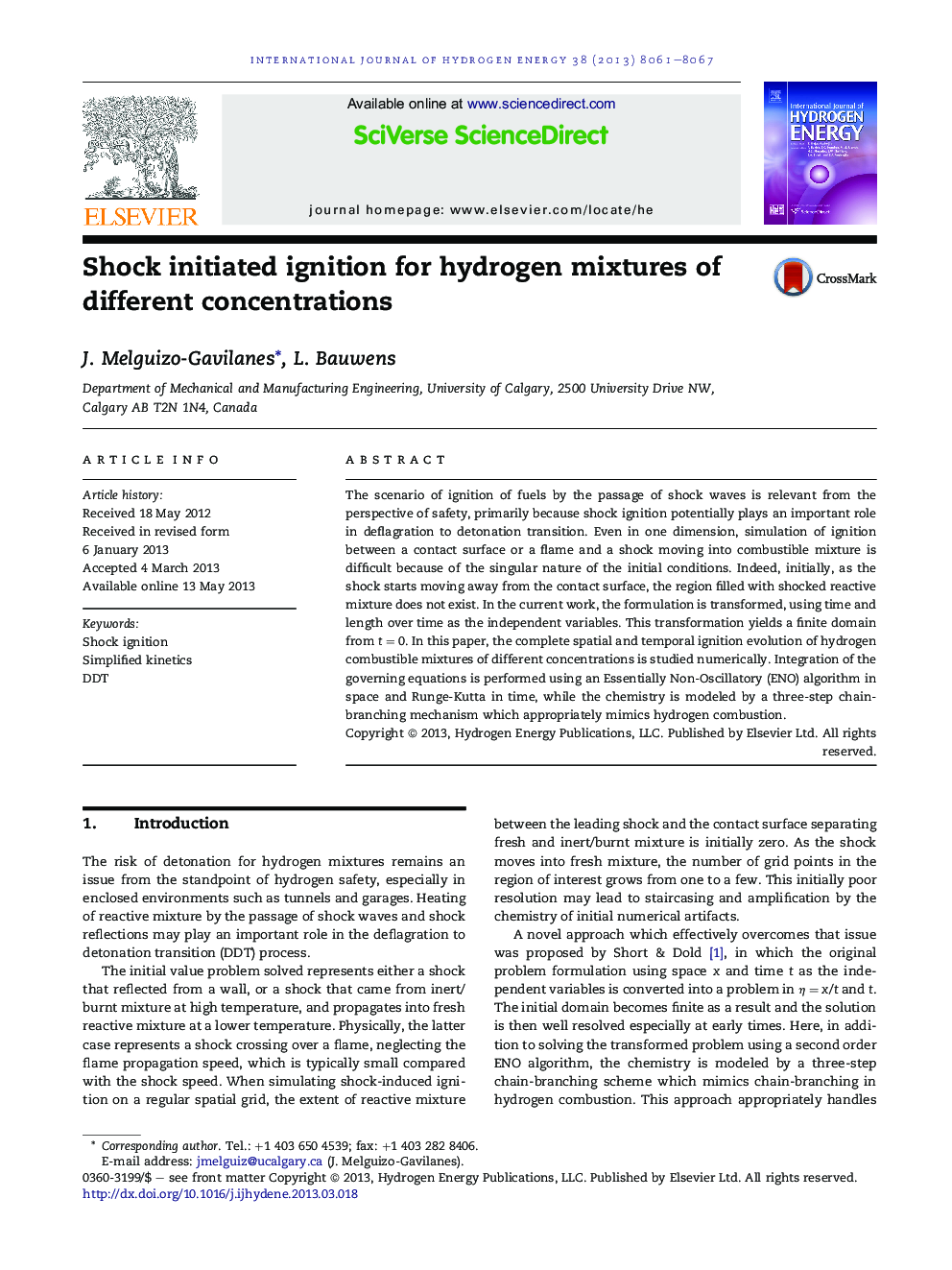| Article ID | Journal | Published Year | Pages | File Type |
|---|---|---|---|---|
| 1273664 | International Journal of Hydrogen Energy | 2013 | 7 Pages |
•Approach proposed was effective to tackle the shock-induced ignition problem.•Results show that as the heat release is increased ignition takes place faster.•Results provide useful insight into hydrogen ignition dynamics and subsequent DDT.
The scenario of ignition of fuels by the passage of shock waves is relevant from the perspective of safety, primarily because shock ignition potentially plays an important role in deflagration to detonation transition. Even in one dimension, simulation of ignition between a contact surface or a flame and a shock moving into combustible mixture is difficult because of the singular nature of the initial conditions. Indeed, initially, as the shock starts moving away from the contact surface, the region filled with shocked reactive mixture does not exist. In the current work, the formulation is transformed, using time and length over time as the independent variables. This transformation yields a finite domain from t = 0. In this paper, the complete spatial and temporal ignition evolution of hydrogen combustible mixtures of different concentrations is studied numerically. Integration of the governing equations is performed using an Essentially Non-Oscillatory (ENO) algorithm in space and Runge-Kutta in time, while the chemistry is modeled by a three-step chain-branching mechanism which appropriately mimics hydrogen combustion.
